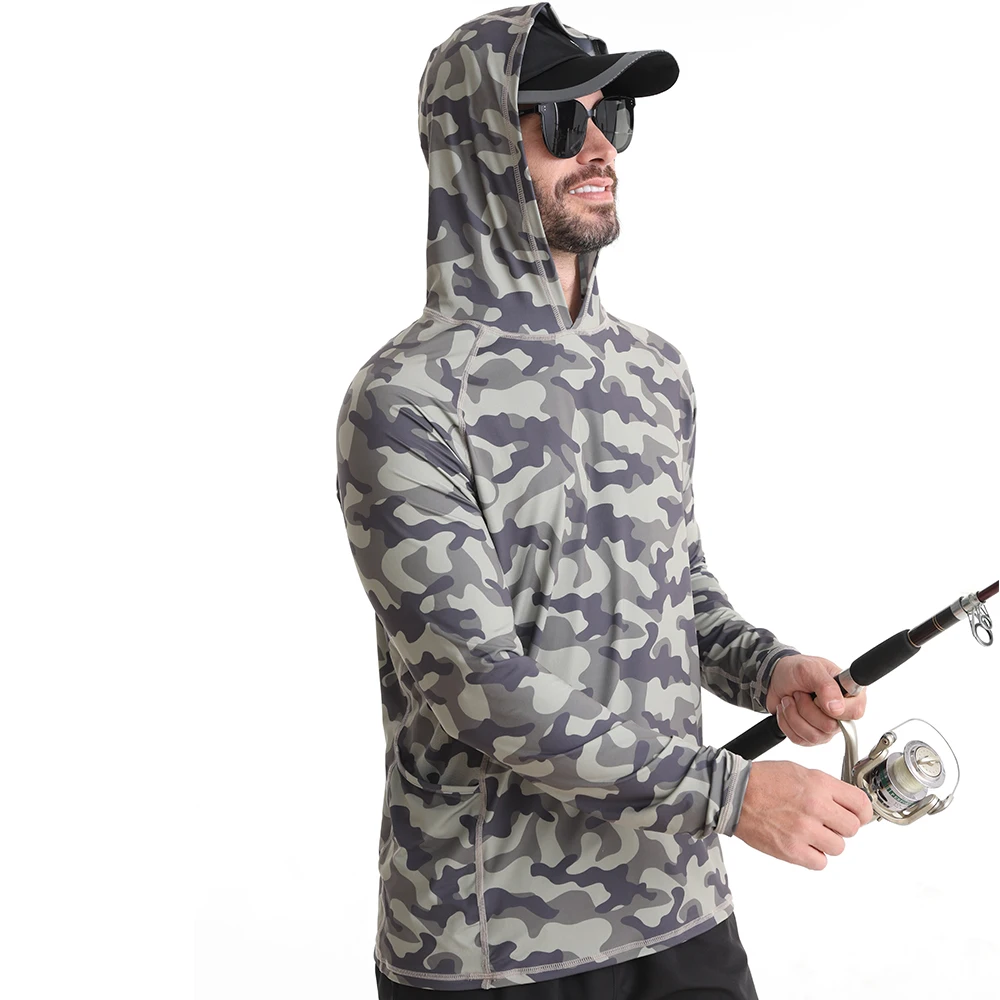about
PRODUCTS
"Fishing Apparel for Professionals: What to Look for in 2024"
As a professional angler, your equipment is an extension of yourself. Every piece plays a crucial role in your success, and your apparel is no exception. Fishing apparel is no longer about just looking good; it's about optimizing performance, comfort, and protection. 2024 is a year of innovation in fishing attire, with advancements in materials, technology, and design catering specifically to the needs of serious anglers. This guide will delve into the key elements to consider when choosing fishing apparel in 2024, ensuring you have the edge on the water.
Performance Fabrics
The foundation of high-performance fishing apparel lies in its fabrics. Gone are the days of stiff, uncomfortable cotton. Today's materials are designed to meet the unique demands of a fishing lifestyle. Look for fabrics that prioritize:
Moisture-wicking: Fishing can be a sweaty endeavor, especially in warm weather. Choose fabrics that actively pull moisture away from your skin, keeping you cool, dry, and comfortable. Look for keywords like "wicking," "performance," or "moisture-management" on labels.
Water resistance: Whether you're battling the elements or simply dealing with splashes, water resistance is crucial. Fabrics treated with durable water repellent (DWR) coatings shed water, keeping you dry and comfortable. These coatings can be found on jackets, pants, and even shirts.
Breathability: Don't sacrifice breathability for water resistance. Look for fabrics that allow airflow, preventing you from overheating in warmer conditions. This is especially important for jackets and pants, as they can create a barrier between your body and the environment.
Durability: Fishing is a physically demanding sport. You'll be moving around, potentially encountering sharp objects like hooks and lures. Choose fabrics that can withstand the rigors of the sport. Look for materials like ripstop nylon or polyester, known for their strength and tear resistance.
Sun Protection
Protecting yourself from the sun is paramount when spending hours on the water. Look for fishing apparel that incorporates:
UPF (Ultraviolet Protection Factor) Rating: This rating indicates the level of protection a fabric offers against harmful UV rays. Aim for clothing with a UPF of 30 or higher, which blocks out 95% of the sun's rays.
Sun-blocking Hats: A wide-brimmed hat will shield your face, ears, and neck from the sun's harmful rays. Look for hats made from breathable fabrics like cotton or mesh, and choose a hat with a UPF rating for added protection.
Sunglasses: Polarized sunglasses will reduce glare, protecting your eyes from the intense reflection of the sun off the water. Choose lenses with UV protection to block out harmful rays.
Temperature Control
The weather on the water can change quickly. It's essential to have apparel that allows you to adapt to fluctuating temperatures. Consider:
Layering: Layer your clothing to create a system that can be adjusted as temperatures change. Start with a base layer for moisture-wicking, followed by an insulating layer (fleece or thermal), and finish with a water-resistant outer layer. This system allows you to shed layers when you're warm and add them back on when it cools down.
Insulated Jackets: For cooler weather, insulated jackets provide warmth without sacrificing mobility. Look for jackets with down or synthetic insulation, and ensure they are windproof and water-resistant.
Lightweight Base Layers: Even in warmer weather, a lightweight base layer can help regulate your temperature by wicking away moisture and preventing chills. Choose fabrics like merino wool or synthetic materials designed for performance.
Storage and Organization
Fishing demands a lot of gear, and having dedicated storage solutions in your apparel is crucial. Look for features like:
Cargo Pockets: Strategically placed pockets are essential for storing everything from tackle boxes to phone and wallets. Choose pants and jackets with multiple, secure pockets, some with water-resistant zippers.
Zippered Chest Pockets: These provide easy access to frequently used items like lures or fishing licenses.
Rod Holders: Some fishing vests and jackets incorporate rod holders, allowing you to keep your rod securely attached while you move around.
D-Rings and Loops: These features can be used to attach additional gear or accessories to your clothing.
Comfort and Fit
Fishing can be a long day, so it's vital that your apparel feels comfortable. Consider:
Fit: Choose clothing that fits well but allows for full range of motion. Avoid anything that restricts movement or feels constricting.
Seams: Look for clothing with flat seams to prevent chafing, especially in areas that experience a lot of movement.
Material Comfort: Some fabrics are inherently more comfortable than others. Consider materials like merino wool, bamboo, or performance synthetics that are known for their softness and breathability.
Additional Considerations
Beyond the core aspects discussed above, some additional factors can enhance your fishing experience:
Safety: Look for clothing with reflective details or high-visibility colors, especially if you're fishing in low-light conditions.
Durability: Choose apparel made from abrasion-resistant materials, especially for pants and jackets, to withstand the wear and tear of the sport.
Style: While functionality is key, don't forget about personal style. Look for clothing that makes you feel confident and comfortable, whether you're on the water or off.
Investing in quality fishing apparel is an investment in your enjoyment and success. By understanding the key features and advancements available in 2024, you can choose clothing that not only keeps you comfortable but also enhances your performance on the water. Remember, the right gear makes all the difference, allowing you to focus on what matters most: catching fish.
SUBSCRIBE
INQUIRY





